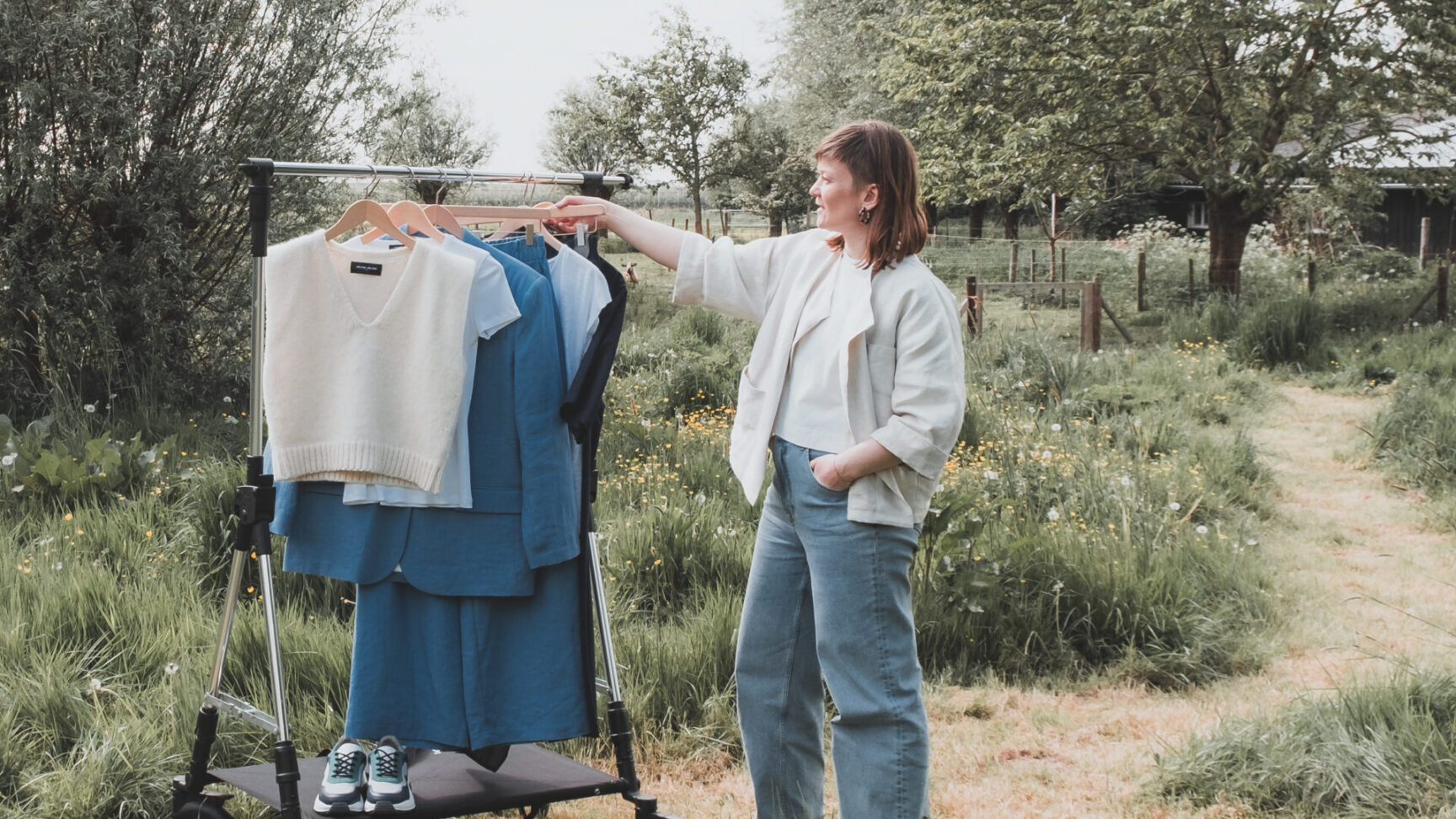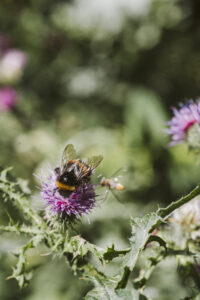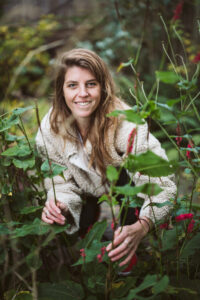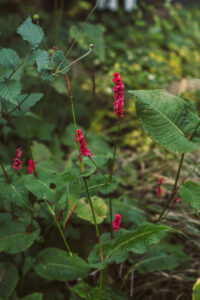Joline Jolink
Activities:Regenerative fashion & agriculture
Founder:Joline Jolink
Launched:2008
Location:Welsum

Introductie
Can you grow organic flax for linen and subsequently turn the fibres locally into clothing? Dutch fashion designer Joline Jolink - who has been making radically sustainable collections for years - bought a farm to do it. “My goal is to make the entire process visible, from fibre to garment.”
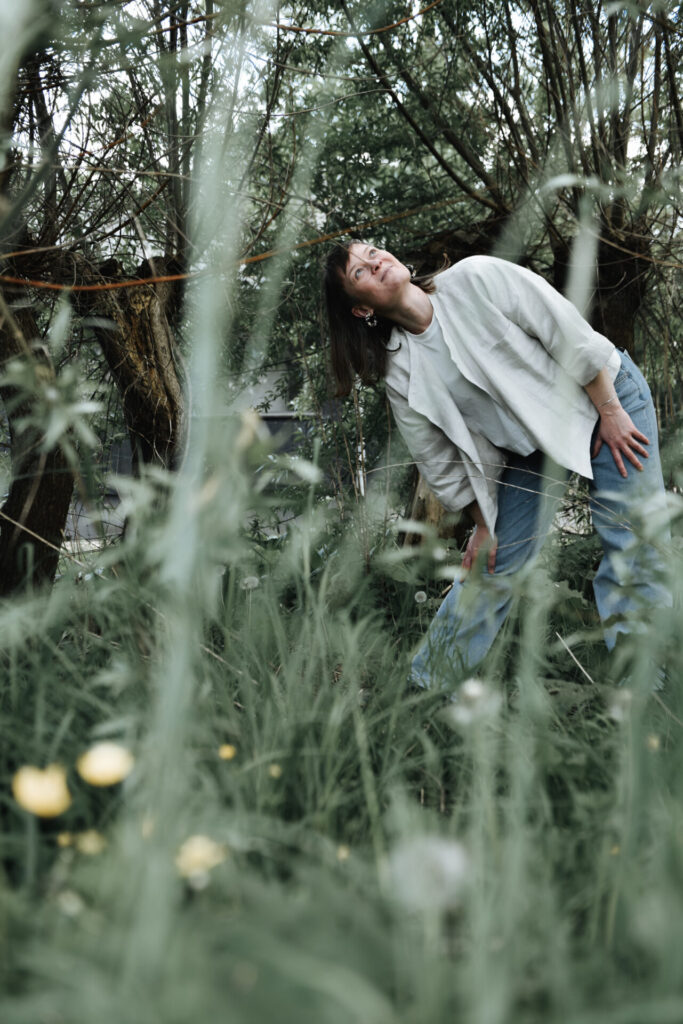 Joline Jolink on her regenerative farm in Welsum. Photographer: Diane van der Marel
Joline Jolink on her regenerative farm in Welsum. Photographer: Diane van der Marel
As a child, Joline discovers relatively young that she wants to be a fashion designer. “This was due to my grandmother”, she explains, “who created tailor-made gowns for private clients in their living rooms.” Right after secondary school, Joline ends up in art school to study fashion, but the system she finds herself in after graduation feels like a delusion. “Designing collections, presenting them during fashion shows and then desperately trying to get your foot in with the big brands, it just didn’t sit right with me”, she shares. “Especially because these companies already produce such an enormous amount of clothing that pollutes the planet…”
Joline decides to take a different approach and in 2008, she launches the Netherlands’ first fashion webshop. “It’s hard to imagine now, but back in the day it was a completely new concept”, she laughs. Her sustainable garments made of natural materials catch on and Joline enjoys the direct contact with her customers. “For years, I had tried to force myself into a mould, doing things that didn’t feel right, just because everyone else did it that way. Only once I allowed myself to break free, things started to flow.”
Uitgelichte quote
By now I know that the stronger I feel about something, the more I can rely on it, because others are bound to feel it too
Choices that feel right
From that moment on, Joline continues to follow her intuition, resulting in a clothing brand that is increasingly ecological. For instance, nowadays her collection consists entirely of organic and recycled materials (including a jacket of 100 percent Dutch linen), she makes vegan sneakers out of fruit leather, almost everything is produced in Europe, people can buy second-hand items in her shop and she hasn’t participated in fashion shows or sales discounts for years.
“In our capitalist economy, we like to think that people want as many clothes for as little money as possible. But I am not like this at all and neither are many others”, Joline shares. “By now I know that the stronger I feel about something, the more I can rely on it, because others are bound to feel it too.”
Another radical choice that feels perfectly logical to Joline, is to work with a production ceiling. “I implemented this when one of my producers upped the pressure and told me that I had to start taking a minimum of 35,000 jeans per year. This seemed ridiculous to me, especially because jeans only make up around 10 percent of my collection. So I asked myself: what is enough? Then I calculated that, if we make 20,000 garments per year, everything works out financially and at the same time, I can look myself in the eye. So that’s what we landed on. Endless growth is not an attractive goal for me. Keeping the balance is challenging enough.”
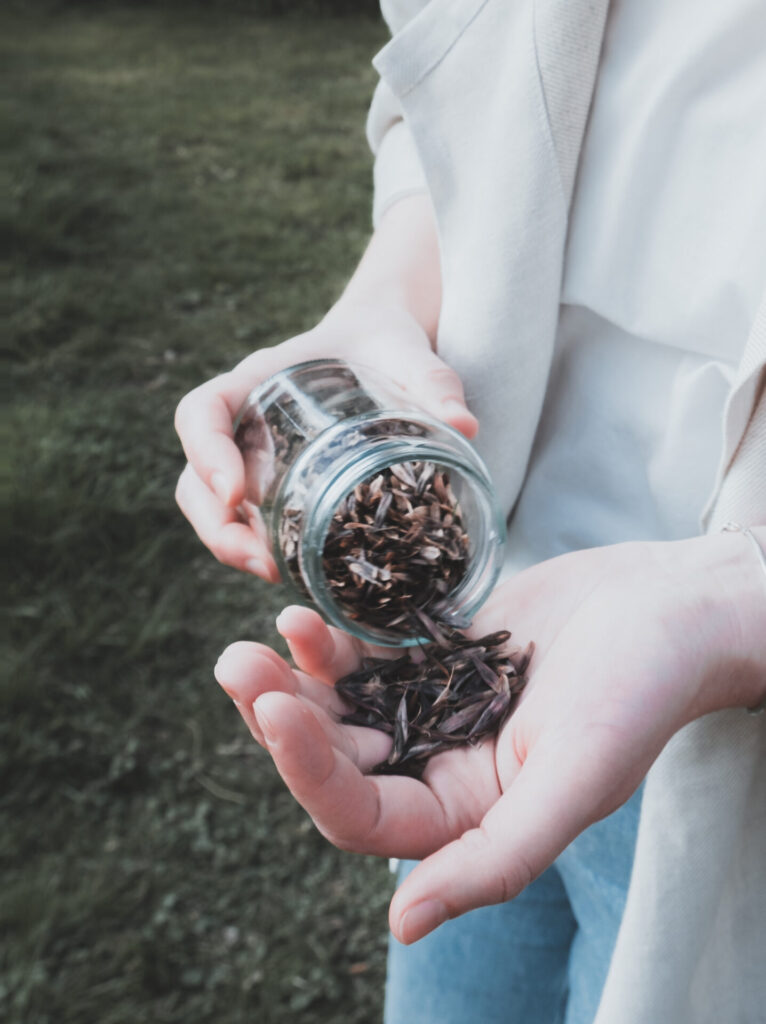 Dyeing clothes with natural materials. Photographer: Diane van der Marel
Dyeing clothes with natural materials. Photographer: Diane van der Marel
 Joline Jolink in her studio. Photographer: Diane van der Marel
Joline Jolink in her studio. Photographer: Diane van der Marel
From sustainability to regeneration
“Ultimately, you want all your fabrics and dyes to be grown locally, with native plants that feed pollinators. In that way you produce clothes that are so natural, they can be composted again and return their nutrients to the soil. Then you make something truly worthwhile, because it actually benefits the environment”, Joline says. To get here, together with her partner, she bought a 1,1 hectare permaculture farm in the East of the Netherlands, where she wants to make the whole process – from raw materials to finished product – transparent.
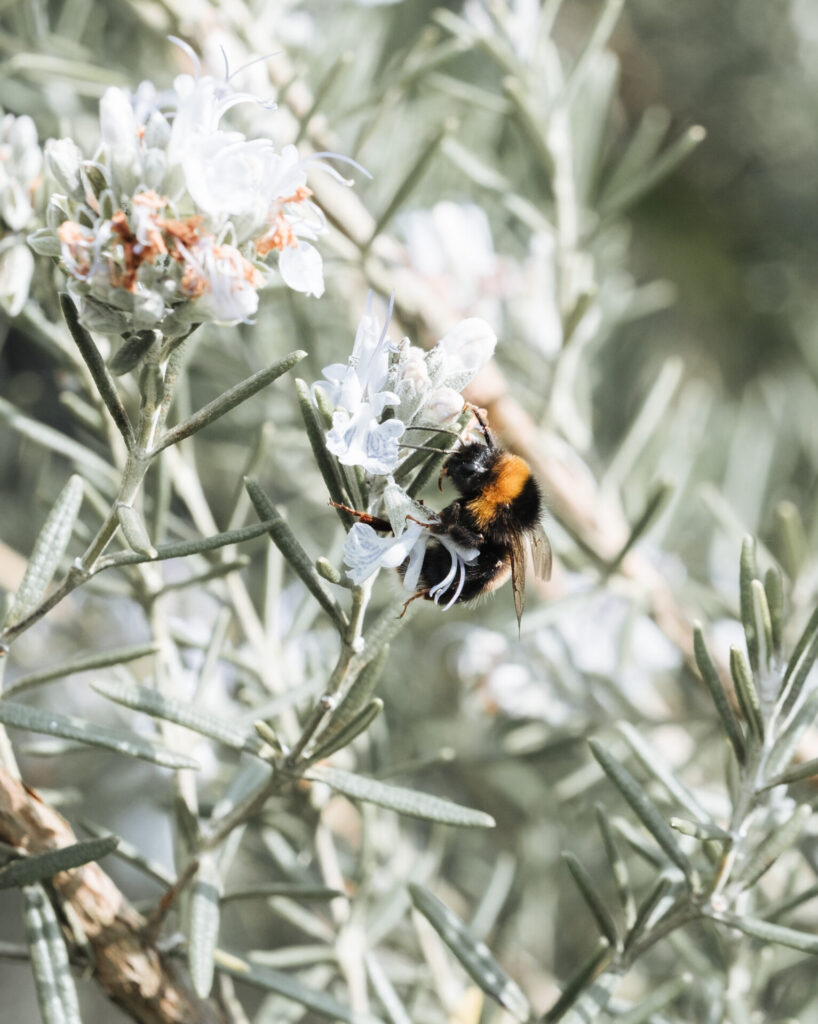 Photografer: Diane van der Marel
Photografer: Diane van der Marel
“We recently sowed flax that we will use to make linen”, Joline shares excitedly. “However, I have very little farming experience, so at the moment I’m mostly observing what happens in the field and trying to learn by doing.” She also gathered a group of volunteers, who are keen to explore with her. “One of them is an artist who has been making prints on linen canvases for years, but also didn’t know exactly how the material is made. And there is a sourdough baker, who used to be an arable farmer, and who can tell me exactly which grains I should grow to restore the soil after we’ve harvested the flax.”
Turning flax into fabric is quite a process, Joline explains. When the crop is fully grown, you have to let it rest for a while, so that the hard part can separate from the core and you’re left with a long fibre. These fibres are ‘hackled’ – hammered through beds of nails – until they’re thin enough to spin into thread. “Normally this is done abroad, but we will do this by hand on site too”, says Joline. “Once we have the yarn, we will weave or knit it into pieces of fabric, which we will turn into garments that you will endlessly wear, repair, treasure and eventually pass on.”
Uitgelichte quote
You don’t have to reach the sky in order to make a difference. Growth can also mean that, like a tree, you deepen your root network. This is the type of progress we are after
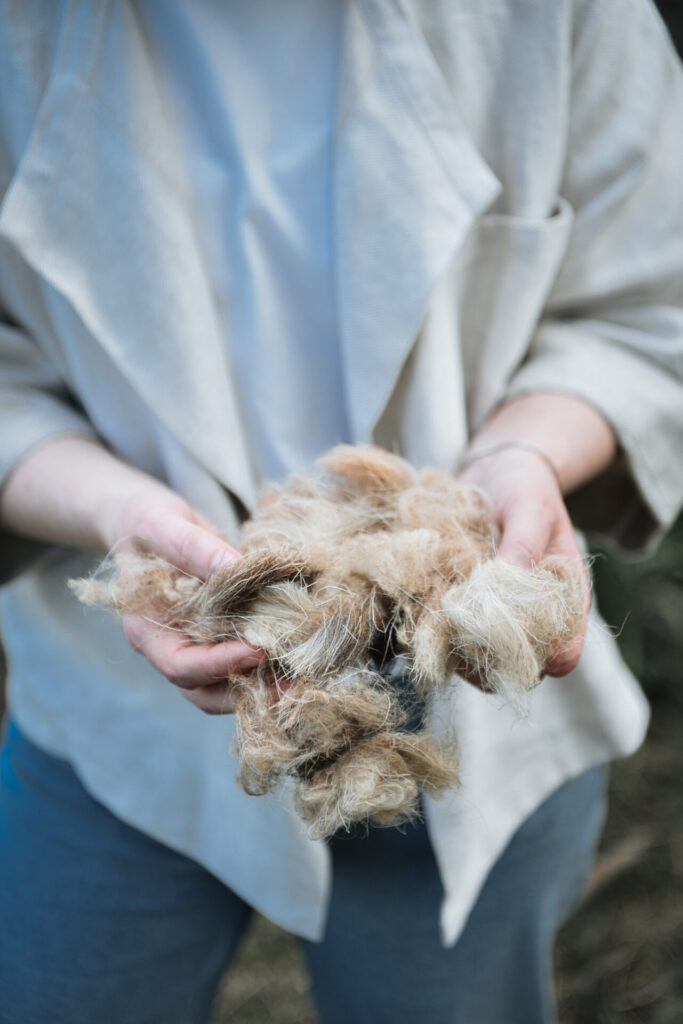 Wool from a ‘hair sheep’: sheep you don’t have to shear. Photographer: Diane van der Marel
Wool from a ‘hair sheep’: sheep you don’t have to shear. Photographer: Diane van der Marel
 Joline with her sheep. Photographer: Diane van der Marel
Joline with her sheep. Photographer: Diane van der Marel
Ripple effect
Although Joline is working on all sorts of projects on the farm – such as creating indigo out of plants and raising ‘hair sheep’, which moult so they don’t have to be sheared – she doesn’t expect to produce all the raw materials for her own collections anytime soon. “Nor is that possible on one hectare of land”, she says. “What I do hope is that we can create a ripple effect, so that the people who attend one of our workshops will start to consume differently. Or that local farmers, who see the potential in our experiment, start growing organic and regenerative crops as well.”
“I feel a sense of modesty since we have moved to the farm. Constantly being in a rush or acting overambitious feels obscene here”, she shares. “You don’t have to reach the sky in order to make a difference. Growth can also mean that, like a tree, you deepen your root network. This is the type of progress we are after.”
Keen to read more about regenerative fashion? We previously interviewed Reina Ovinge, who shows local and ecological wool is possible.
Originally published on the 3rd of June 2024. Translated on the 11th of June 2024 by Nadine Maarhuis.
